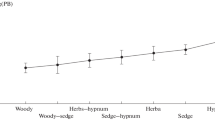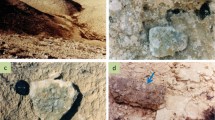Abstract
The aim of this study was to assess the structure and function of the microbial loop in a peatland of the French Massif central, and the impact of fertilization on the different microbial communities.
In terms of biomass, testate Amoeba (48% of the total microbial biomass), heterotrophic bacteria (15%), cyanobacteria (14%) and Bacillariophyceae (13%) were the dominant groups of microorganisms. Other microalgae (7%), ciliates (2%) and heterotrophic flagellates (1%) accounted for only a low proportion of total microbial biomass. The relative importance of heterotrophic microorganisms was higher than in marine or lacustrine environments. In addition, ciliates and heterotrophic flagellates only constituted a small proportion of the total protozoan biomass, which was heavily dominated by testate amoeba. Thus, the structure of the protist community in the subaquatic peatland was completely different from that reported for lakes or marine environments.
In other aspects, the supply of nutrients (PKCa and NPKCa) resulted in increases of the relative biomasses of heterotrophic bacteria, Bacillariophyceae, and ciliates and by a decrease in the relative proportion of testate amoeba and of other microalgae.
Similar content being viewed by others
Author information
Authors and Affiliations
Additional information
Received: 12 August 1996; Accepted: 1 April 1997
Rights and permissions
About this article
Cite this article
Gilbert, D., Amblard, C., Bourdier, G. et al. The Microbial Loop at the Surface of a Peatland:Structure, Function, and Impact of Nutrient Input. Microb Ecol 35, 83–93 (1998). https://doi.org/10.1007/s002489900062
Issue Date:
DOI: https://doi.org/10.1007/s002489900062




